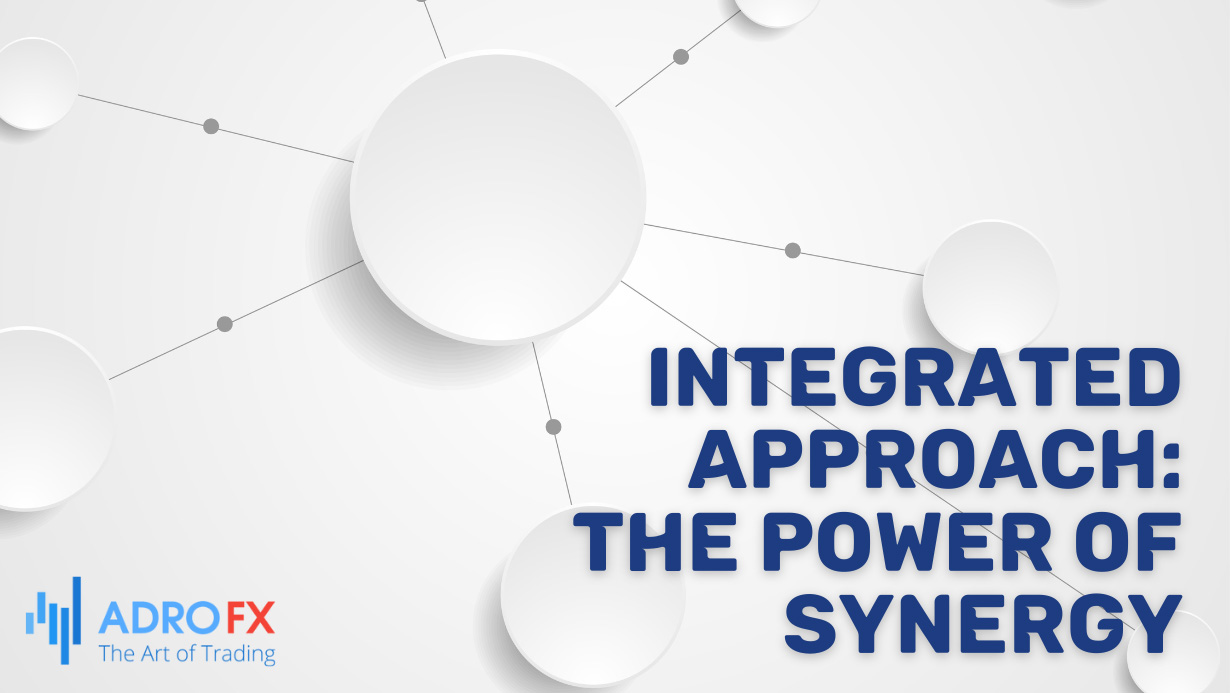Pillars of a Profitable Trading Strategy

In the fast-paced world of financial markets, navigating the complexities of trading demands a well-crafted strategy that stands resilient amid market fluctuations. As traders strive for success, understanding the fundamental pillars of a profitable trading strategy becomes paramount. This article delves into the crucial elements that form the bedrock of a robust and successful trading approach. From key indicators and technical analysis techniques to fundamental factors and effective strategies, we embark on a journey to unravel the essential components that can elevate your trading endeavors. Join us as we explore the "Pillars of a Profitable Trading Strategy," providing insights and guidance for both seasoned traders looking to refine their approach and newcomers seeking a solid foundation for success in the dynamic world of trading.
Components Each Strategy Must Contain
In constructing a profitable trading strategy, certain essential components serve as the building blocks for success. Understanding and incorporating these elements can significantly enhance the effectiveness of your approach. Here, we delve into the key components that every successful trading strategy should encompass:
- Clear Objectives and Risk Tolerance
A successful trading strategy begins with a well-defined set of objectives. Whether aiming for short-term gains or long-term growth, outlining your financial goals provides a roadmap for decision-making. Equally important is a thorough understanding of your risk tolerance. Establishing the level of risk you are comfortable with ensures that your strategy aligns with your financial preferences and avoids unnecessary stress. - Comprehensive Market Analysis
Informed decision-making hinges on a thorough analysis of the market. Incorporate both technical and fundamental analyses to gain a holistic understanding of market trends, price movements, and relevant economic factors. Technical analysis tools, such as charts and indicators, aid in predicting future price movements, while fundamental analysis delves into economic indicators, geopolitical events, and market sentiment. - Effective Risk Management
Mitigating risk is a cornerstone of any profitable trading strategy. Implementing risk management techniques, such as setting stop-loss orders and determining position sizes, safeguards your capital from substantial losses. A well-calibrated risk management plan ensures that no single trade jeopardizes your entire investment, allowing you to navigate the market with confidence. - Diversification of Assets
A resilient trading strategy includes diversification across various assets or asset classes. Spreading your investments helps mitigate the impact of poor-performing assets and enhances the overall stability of your portfolio. Diversification is a strategic approach to managing risk and maximizing opportunities in different market conditions. - Adaptability and Continuous Learning
Financial markets are dynamic and subject to constant change. A profitable trading strategy should be adaptable to evolving market conditions. Stay attuned to market trends, economic developments, and emerging technologies. Continuous learning ensures that your strategy remains relevant and effective in the face of ever-changing market dynamics.
As we explore the pillars of a profitable trading strategy, these components lay the groundwork for success, providing a comprehensive framework for traders to optimize their decision-making and increase the likelihood of achieving their financial objectives.

Strategic Execution and Timing
Executing a trading strategy with precision is as crucial as the strategy itself. This section explores the significance of strategic execution and timing in maximizing the effectiveness of your trading approach.
- Entry and Exit Points
Pinpointing opportune moments to enter and exit trades is a critical aspect of strategic execution. Analyze price charts, identify patterns, and use technical indicators to determine optimal entry points. Establish clear criteria for when to exit a trade, whether based on predefined profit targets or risk thresholds. This disciplined approach minimizes emotional decision-making, contributing to a more successful strategy. - Order Types and Execution Techniques
Understanding various order types and execution techniques enhances your ability to implement your strategy effectively. Whether employing market orders, limit orders, or stop orders, each has its unique advantages in different market scenarios. Additionally, exploring execution techniques such as algorithmic trading can offer automation and precision in executing trades. - Monitoring and Adjusting
Continuous monitoring of your trades and the broader market is essential for successful execution. Regularly assess your positions against market developments, news, and any shifts in economic indicators. Be prepared to make adjustments to your strategy if market conditions change. This proactive approach allows you to adapt to evolving circumstances and optimize your trading outcomes. - Risk-to-Reward Ratios
Evaluating the risk-to-reward ratios of your trades is integral to strategic execution. Assess the potential reward against the associated risk before entering a trade. Maintaining a favorable risk-to-reward ratio ensures that your potential gains outweigh potential losses, contributing to a more robust and sustainable trading strategy.
By delving into the intricacies of strategic execution and timing, this section aims to empower traders with the knowledge and insights needed to implement their trading strategies with precision. Understanding how to execute trades strategically and timely adjustments can significantly impact the overall success of a trading strategy.

Psychological Resilience and Discipline
Maintaining a resilient mindset and disciplined approach is often the differentiating factor between successful and unsuccessful traders. In this section, we explore the psychological aspects crucial for navigating the unpredictable nature of financial markets.
- Emotional Intelligence
Successful trading requires a high level of emotional intelligence to manage the psychological challenges inherent in the market. This includes mastering emotions such as fear, greed, and impatience, which can cloud judgment and lead to irrational decisions. Developing emotional resilience allows traders to stay focused on the long-term goals of their strategy, regardless of short-term market fluctuations. - Patience and Consistency
Patience is a virtue in trading. This section emphasizes the significance of patiently waiting for high-probability setups and avoiding impulsive actions. Consistency in adhering to your strategy, even during periods of market uncertainty, fosters a stable and reliable approach. Both patience and consistency contribute to the overall success of a trading strategy. - Learn from Mistakes
Acknowledging and learning from mistakes is an integral part of the trading journey. This section encourages traders to view losses as opportunities for growth rather than failures. Analyzing and understanding the reasons behind unsuccessful trades provides valuable insights that can be applied to refine and strengthen the trading strategy moving forward. - Mindful Risk Management
Psychological resilience ties closely to effective risk management. This section emphasizes the importance of setting realistic expectations, embracing losses as part of the trading process, and avoiding the temptation to take excessive risks. A disciplined approach to risk management contributes to a stable emotional state and fosters a sustainable trading mindset.
Understanding and managing emotions, staying patient and consistent, learning from mistakes, and maintaining mindful risk management collectively contribute to the psychological fortitude needed for successful trading.
Continuous Evaluation and Adaptation
In the ever-evolving landscape of financial markets, adaptability is a key determinant of trading success. This section emphasizes the importance of continuous evaluation and adaptation in ensuring the ongoing relevance and effectiveness of your trading strategy.
- Regular Performance Reviews
Conducting regular performance reviews is crucial for assessing the efficacy of your trading strategy. Evaluate the outcomes of your trades against your predefined objectives and benchmarks. By scrutinizing both successful and unsuccessful trades, you can identify patterns and areas for improvement, facilitating ongoing refinement of your approach. - Market Dynamics Awareness
Financial markets are dynamic, influenced by economic shifts, geopolitical events, and global trends. Stay attuned to these market dynamics through continuous research and analysis. Awareness of changing conditions enables you to make informed adjustments to your strategy, ensuring it remains aligned with the current market environment. - Technological Integration
Leverage technological advancements to enhance the efficiency and accuracy of your trading strategy. Explore cutting-edge tools, algorithmic trading, and data analytics to stay ahead of the curve. Technological integration not only streamlines the execution of trades but also provides valuable insights for strategic adjustments. - Adaptation to Economic Trends
Economic trends play a pivotal role in shaping market conditions. This section encourages traders to adapt their strategies to align with broader economic trends. Whether it involves adjusting asset allocations or fine-tuning risk management protocols, staying adaptable to economic shifts is crucial for sustained success.
By underscoring the need for continuous evaluation and adaptation, this section aims to instill a proactive mindset in traders. The ability to evolve with market dynamics, embrace technological innovations, and adapt to economic trends positions traders for long-term success in an ever-changing financial landscape.

Integrated Approach: The Power of Synergy
Harmony among the components of a trading strategy is the catalyst for success in the financial markets. It's not merely about having individual strengths; it's the art of orchestrating them into a harmonious symphony. This section explores the pivotal importance of combining strategy components synergistically for a comprehensive and effective trading approach.
- Balancing Risk and Reward
The synergy begins with aligning risk management with strategic objectives. Each component contributes to a delicate balance – from setting clear objectives and comprehending risk tolerance to executing precise entry and exit points. This equilibrium ensures that risk is purposefully undertaken, optimizing the potential for profitable outcomes. - Strategic Execution and Psychological Resilience
The interplay between strategic execution and psychological resilience is a linchpin in a trader's journey. A well-executed strategy not only yields financial gains but also fosters emotional stability. Conversely, a resilient mindset enhances the precision of strategic execution, creating a symbiotic relationship crucial for consistent success. - Continuous Adaptation
The components of a trading strategy are not static; they evolve. Recognizing the dynamic nature of financial markets, traders must adapt continuously. Strategic components, when integrated seamlessly, provide the flexibility needed to adjust to market shifts, technological advancements, and economic trends. - Feedback Loop of Evaluation
Continuous evaluation acts as the feedback loop that refines the synergy of components. Regularly assessing the strategy against market dynamics and performance benchmarks ensures that it remains agile and effective. This cyclical process of evaluation and adjustment propels the trading approach forward.
Understanding the significance of combining these components synergistically is akin to mastering the art of trading alchemy. It transforms a collection of techniques into a powerful, adaptive strategy capable of navigating the intricate currents of the financial world. The integrated approach is the true essence of trading success – a holistic synergy greater than the sum of its parts.
Conclusion
As we conclude our exploration into the pillars of a profitable trading strategy, it is crucial to recognize that trading success is a dynamic journey rather than a destination. The components, strategic execution, psychological resilience, and continuous evaluation discussed herein collectively form a comprehensive framework for traders seeking sustainable success in the financial markets.
Each aspect contributes uniquely to the overall efficacy of a trading strategy. While strategic components lay the groundwork, strategic execution and timing ensure precise implementation. Psychological resilience and discipline provide the mental fortitude required to navigate the inherent challenges of trading. Continuous evaluation and adaptation act as the compass, guiding traders to stay responsive to evolving market conditions.
Ultimately, success in trading requires a holistic approach that combines technical acumen, emotional intelligence, and a commitment to ongoing improvement. By integrating these pillars into your trading approach, you not only enhance your ability to identify profitable opportunities but also cultivate a resilient and adaptive mindset essential for long-term success in the ever-changing world of financial markets.
About AdroFx
Established in 2018, AdroFx is known for its high technology and its ability to deliver high-quality brokerage services in more than 200 countries around the world. AdroFx makes every effort to keep its customers satisfied and to meet all the trading needs of any trader. With the five types of trading accounts, we have all it takes to fit any traders` needs and styles. The company provides access to 115+ trading instruments, including currencies, metals, stocks, and cryptocurrencies, which make it possible to make the most out of trading on the financial markets. Considering all the above, AdroFx is the perfect variant for anyone who doesn't settle for less than the best.









